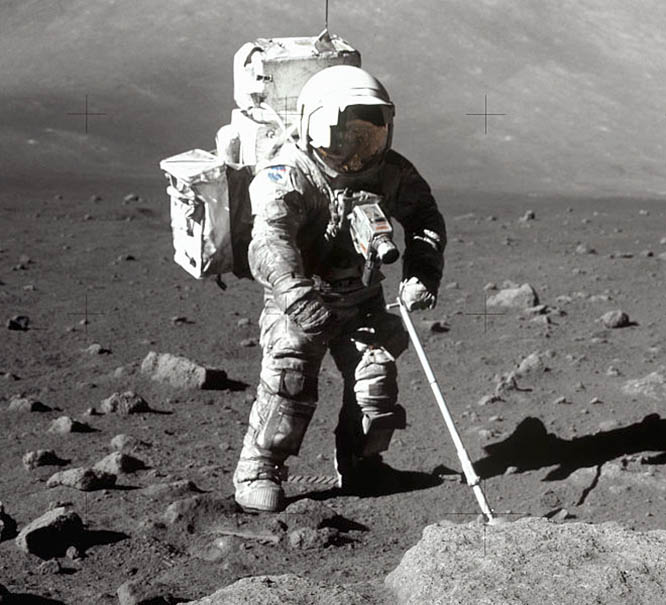
Fact sheet
Core samples were collected to study in-place density, stratification and fabric or particle arrangement of the near-surface lunar soil (regolith). This soil is the product of billions of years of impacts, large and small. At first, even the smallest impacts hit the local bedrock, shattered it and spread the debris out to a distance dependent on the size of the particular impact. Gradually, a thin layer of regolith began to accumulate. The smallest impacts no longer reached bedrock but did break or chip larger fragment in the layer and, by scattering debris outward, left a crater. Small impacts produced small craters; large impacts produced larger craters and scattered ejecta to larger distances. The net result was a lunar regolith layer composed of interleaved ejecta blankets, with considerable mixing. Careful examination of the deep cores gave insights into the frequency of impacts.
Our sample is a mixture of constituents, dominated by brown glass, black devitrified glass containing rod-like crystallites (rotation 2) and mineral fragments (rotation 1).
Further details of this and other Apollo samples are here: http://curator.jsc.nasa.gov/lunar/
Apollo 17, the final manned landing mission, had two objectives: to obtain samples of ancient rocks from the lunar highlands and to look for evidence of younger volcanic activity on the valley floor.
This small Collection contains material deriving from both periods, including igneous rocks around 4.3 billion years old from the lunar highlands as well as younger volcanic samples dating from about 3.6 billion years ago.
Apollo 17 was launched on 7 December 1972.






